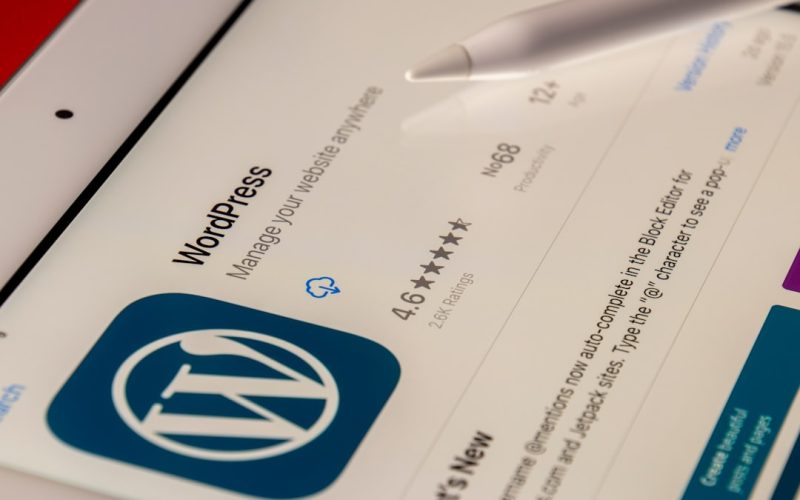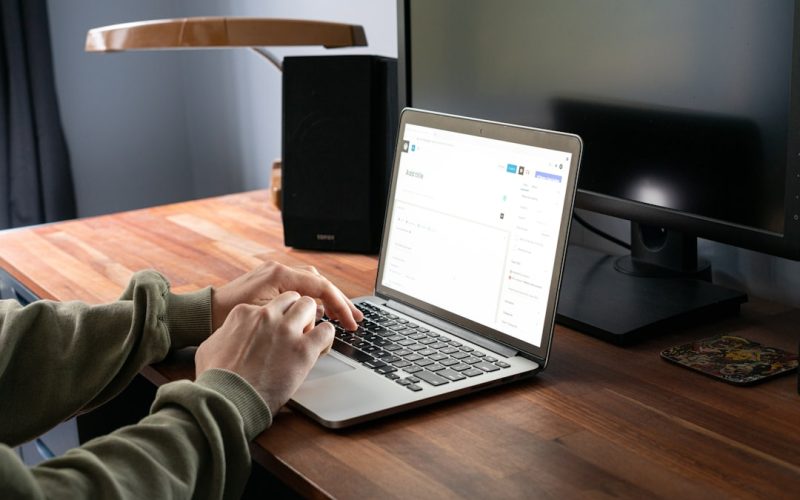The White Screen of Death (WSOD) is a term that sends shivers down the spine of any website owner or developer. I remember the first time I encountered it; my heart sank as I stared at a blank screen where my website should have been. The WSOD is particularly notorious in the WordPress community, but it can occur on any platform.
Essentially, it manifests as a completely white screen with no error messages or indications of what went wrong. This lack of information can be incredibly frustrating, leaving me feeling helpless and confused. The WSOD can occur for various reasons, ranging from simple coding errors to more complex server issues.
It often strikes unexpectedly, catching me off guard when I least expect it. The absence of any visible error messages makes diagnosing the problem a daunting task. However, understanding the underlying causes and potential solutions can empower me to tackle this issue head-on.
By familiarizing myself with the common triggers of the WSOD, I can better prepare myself to address it when it inevitably arises.
Table of Contents
ToggleKey Takeaways
- The White Screen of Death is a common issue in WordPress, causing a blank white screen to appear on the website.
- Common causes of the White Screen of Death include plugin conflicts, theme and plugin updates, memory limit issues, corrupted files, database connection problems, and server configuration issues.
- Troubleshooting steps for the White Screen of Death include checking for plugin conflicts, updating themes and plugins, addressing memory limit issues, fixing corrupted files, resolving database connection problems, and dealing with server configuration issues.
- Checking for plugin conflicts is an important step in troubleshooting the White Screen of Death, as conflicting plugins can cause the issue.
- Updating themes and plugins regularly can help prevent the White Screen of Death in the future, as outdated software can lead to compatibility issues.
Common Causes of the White Screen of Death
As I delved deeper into the world of web development, I discovered that several common culprits often lead to the dreaded WSOD. One of the most frequent causes is a PHP error, which can occur due to coding mistakes or compatibility issues between different components of my website. When a PHP script fails to execute properly, it can result in a complete halt of the page rendering process, leaving me with nothing but a blank screen.
Another common cause is memory exhaustion. Every website has a memory limit set by the hosting provider, and if my site exceeds this limit, it can lead to the WSOD. This situation often arises when I have too many plugins running simultaneously or when a particular plugin consumes an excessive amount of resources.
Understanding these potential triggers has been crucial in my journey to prevent and resolve the WSOD effectively.
Troubleshooting Steps for the White Screen of Death

When faced with the WSOD, my first instinct is to remain calm and methodical in my approach to troubleshooting. The first step I take is to refresh the page, as sometimes a temporary glitch can cause the issue. If that doesn’t work, I move on to checking my website’s error logs.
These logs can provide valuable insights into what went wrong and help me pinpoint the source of the problem.
Next, I consider whether any recent changes were made to my website before the WSOD appeared.
Did I install a new plugin or update an existing one? Did I make changes to my theme? By retracing my steps, I can often identify the culprit and take appropriate action to rectify the situation.
If all else fails, I may need to reach out to my hosting provider for assistance, as they may have additional tools and resources at their disposal to help diagnose and resolve the issue.
Checking for Plugin Conflicts
| Plugin Name | Status |
|---|---|
| Plugin A | Active |
| Plugin B | Inactive |
| Plugin C | Active |
One of the most common sources of the WSOD is plugin conflicts. As I’ve learned through experience, not all plugins play nicely together. When I suspect that a plugin might be causing the issue, I take a systematic approach to identify the problematic one.
First, I access my website’s files via FTP or through my hosting control panel and navigate to the plugins directory. Once there, I temporarily deactivate all plugins by renaming the plugins folder. After doing so, I refresh my website to see if it loads correctly.
If it does, I know that one or more plugins were responsible for the WSOD. From there, I can reactivate each plugin one by one, refreshing my site after each activation until I identify the specific plugin causing the conflict. This process not only helps me resolve the immediate issue but also teaches me which plugins are compatible with my site.
Updating Themes and Plugins
Keeping themes and plugins up to date is essential for maintaining a healthy website and preventing issues like the WSOD. I’ve learned that outdated software can lead to compatibility problems and security vulnerabilities that may ultimately result in a white screen. Regularly checking for updates and applying them promptly has become a crucial part of my website maintenance routine.
When updating themes and plugins, I always back up my website first. This precautionary measure ensures that if something goes wrong during the update process, I can easily restore my site to its previous state. After updating, I monitor my website closely for any signs of trouble.
If everything runs smoothly, I breathe a sigh of relief; if not, I’m prepared to troubleshoot further.
Addressing Memory Limit Issues

Memory limit issues are another common cause of the WSOD that I’ve encountered on multiple occasions. Each hosting provider sets a specific memory limit for websites hosted on their servers, and exceeding this limit can lead to significant problems. To address memory limit issues, I first check my current memory limit by creating a simple PHP file with the `phpinfo()` function.
If I find that my memory limit is indeed low, I can take steps to increase it. This often involves editing the `wp-config.php` file in my WordPress installation and adding a line of code to define a higher memory limit. Alternatively, I may need to contact my hosting provider for assistance in increasing the memory allocation for my site.
By addressing memory limit issues proactively, I can help prevent future occurrences of the WSOD.
Fixing Corrupted Files
Corrupted files can also lead to the White Screen of Death, and identifying them can be a challenging task. In my experience, corrupted files often arise from incomplete updates or server issues during file transfers. When faced with this possibility, I take a methodical approach to fix corrupted files by first identifying which files may be affected.
I typically start by re-uploading core WordPress files from a fresh installation package. This process involves downloading the latest version of WordPress from the official website and extracting it on my local machine. Then, using FTP, I upload only the `wp-admin` and `wp-includes` directories while avoiding overwriting `wp-content`, which contains my themes and plugins.
This method allows me to replace potentially corrupted files without losing any customizations or data.
Resolving Database Connection Problems
Database connection problems are another potential cause of the WSOD that I’ve encountered during my web development journey. When WordPress cannot connect to its database, it often results in a blank screen instead of displaying an error message. To troubleshoot this issue, I first check my `wp-config.php` file for any incorrect database credentials.
If everything appears correct in that file, I then check whether my database server is running properly by accessing my hosting control panel or contacting support for assistance. In some cases, database connection issues may arise due to server overload or maintenance activities on the hosting provider’s end. By understanding how to diagnose and resolve these problems, I’ve been able to restore functionality to my websites quickly.
Dealing with Server Configuration Issues
Server configuration issues can also lead to the White Screen of Death, and they often require a deeper understanding of server settings than other troubleshooting steps might entail. When faced with this possibility, I start by checking my server error logs for any indications of misconfigurations or errors that could be causing the WSOD. If necessary, I may need to adjust settings in my `.htaccess` file or consult with my hosting provider for assistance in resolving server-related issues.
Sometimes, simply resetting server configurations or switching PHP versions can make a significant difference in restoring functionality to my site. By being proactive about server configuration issues, I’ve been able to minimize downtime and keep my websites running smoothly.
Utilizing Debugging Tools
Debugging tools are invaluable when it comes to diagnosing issues like the White Screen of Death. In my experience, enabling WordPress debugging features has provided me with critical insights into what might be going wrong behind the scenes. By adding specific lines of code to my `wp-config.php` file, I can enable error reporting and display error messages directly on my site.
This process allows me to see any PHP errors or warnings that may be causing the WSOD and helps me identify which files or functions are at fault. Additionally, there are various debugging plugins available that can assist in tracking down issues more efficiently. Utilizing these tools has empowered me to tackle problems head-on rather than feeling lost in a sea of white screens.
Preventing the White Screen of Death in the Future
Having faced the White Screen of Death multiple times, I’ve learned that prevention is key to maintaining a healthy website. One of the most effective strategies I’ve adopted is implementing regular backups of my site. By using reliable backup solutions, I ensure that if something goes wrong—whether it’s due to plugin conflicts or server issues—I can quickly restore my site without losing valuable data.
Additionally, I’ve made it a habit to monitor my website’s performance regularly and keep an eye on resource usage through analytics tools provided by my hosting provider.
This proactive approach allows me to identify potential issues before they escalate into more significant problems like the WSOD.
By staying informed and taking preventive measures, I’ve significantly reduced the frequency of encountering this frustrating issue in my web development journey.
In conclusion, while encountering the White Screen of Death can be disheartening, understanding its causes and implementing effective troubleshooting strategies has empowered me as a website owner and developer. By staying vigilant and proactive in maintaining my site, I’ve learned how to navigate these challenges with confidence and resilience.
If you are struggling with the White Screen of Death in WordPress, you may want to consider investing in maintenance packages for WordPress. These packages offered by SimonSays Web Design can help ensure that your website is running smoothly and efficiently. By regularly maintaining your site, you can prevent issues like the White Screen of Death from occurring in the future. Check out their maintenance packages here to keep your website in top shape.
FAQs
What is the White Screen of Death in WordPress?
The White Screen of Death in WordPress is a common issue where a user sees a blank white screen instead of the expected webpage. This can be caused by various factors such as plugin conflicts, theme issues, or memory limits.
How can I fix the White Screen of Death in WordPress?
To fix the White Screen of Death in WordPress, you can try troubleshooting steps such as deactivating plugins, switching to a default theme, increasing memory limits, and checking for PHP errors. It is also recommended to enable debugging to identify the root cause of the issue.
What are the common causes of the White Screen of Death in WordPress?
Common causes of the White Screen of Death in WordPress include plugin conflicts, theme issues, exhausted memory limits, PHP errors, and server-related problems. Identifying the specific cause can help in resolving the issue effectively.
How can I prevent the White Screen of Death in WordPress?
To prevent the White Screen of Death in WordPress, it is important to regularly update plugins and themes, use reputable and compatible plugins, optimize website performance, and keep an eye on server resources. Additionally, maintaining backups can help in quickly restoring the website in case of any issues.




